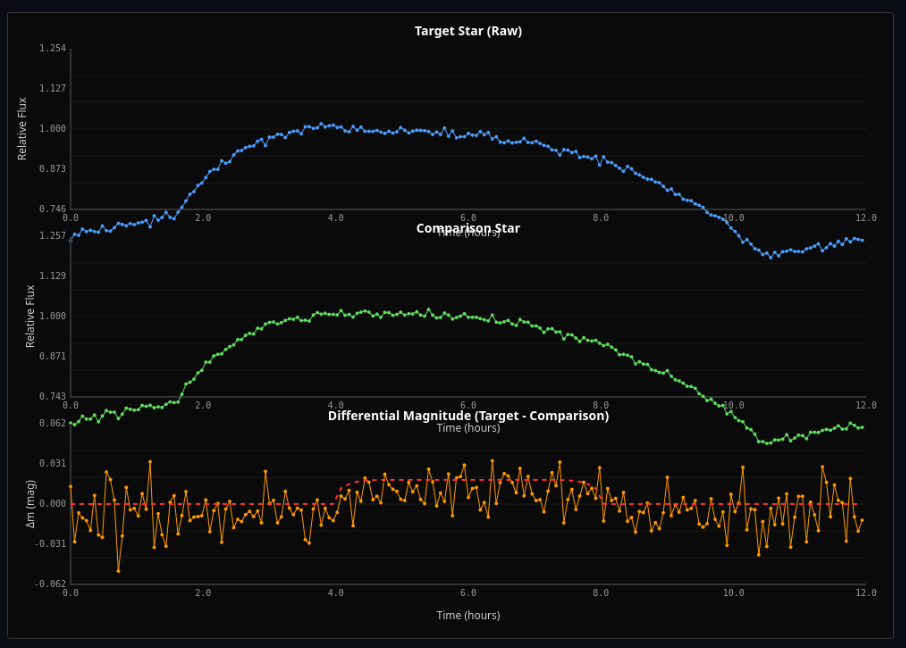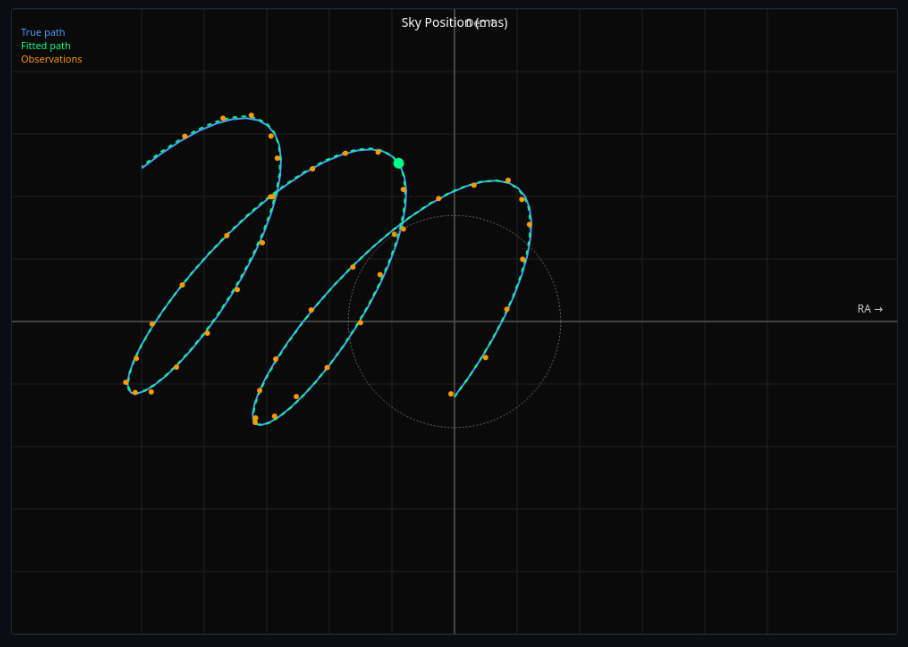Astronomy
Explore the mechanics of celestial bodies, from planetary orbits to stellar evolution. Watch gravitational interactions unfold in N-body simulations, measure stellar properties from their light, and discover exoplanets using real observational techniques. These interactive simulations bring the universe of astronomical observations and orbital dynamics to your screen.
Orbital Mechanics & Dynamics
Master Kepler's laws and explore gravitational interactions. Trace elliptical orbits, find Lagrange points, and watch tidal forces reshape planetary systems over billions of years.
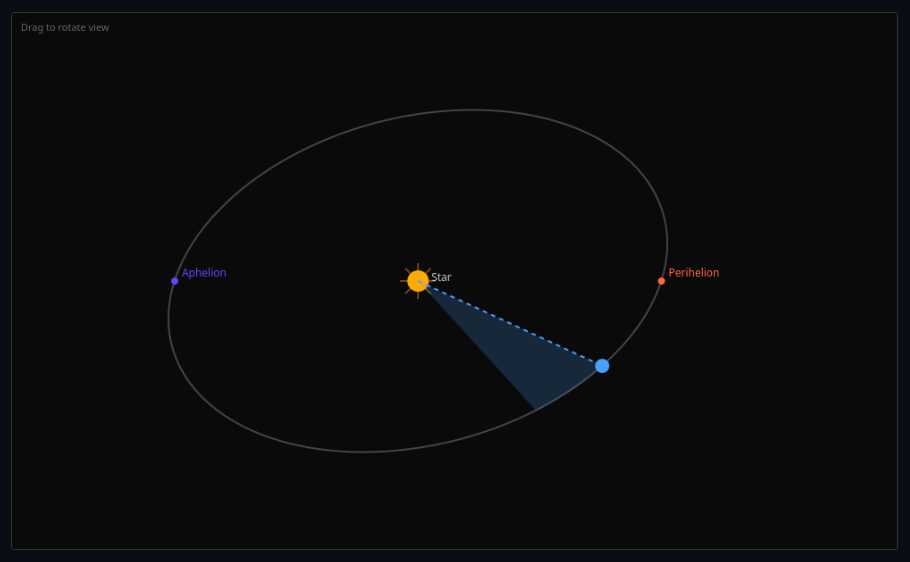
Keplerian Orbital Mechanics
Adjust orbital elements and watch planets trace ellipses—explore eccentricity, inclination, and orbital period
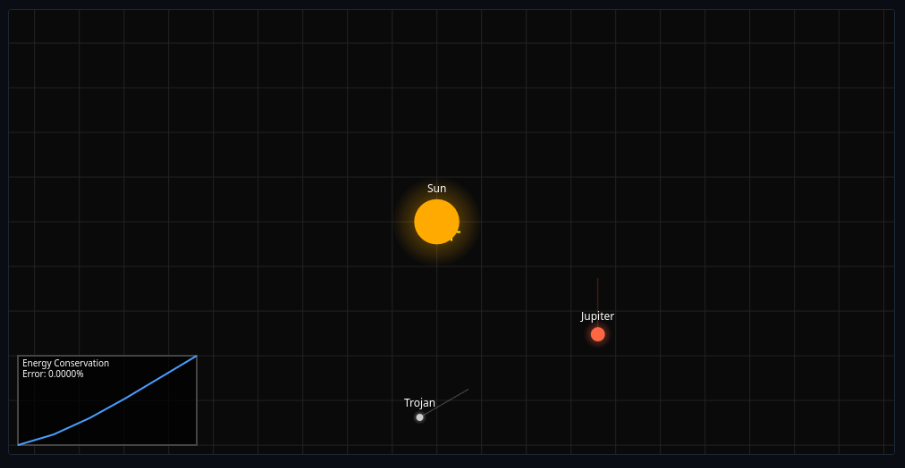
N-Body Gravitational Simulator
Place masses in the plane and watch them gravitationally interact—create binary systems, slingshots, or chaotic orbits

Three-Body Problem & Lagrange Points
Explore the circular restricted three-body problem—find Lagrange points and halo orbits in the rotating frame
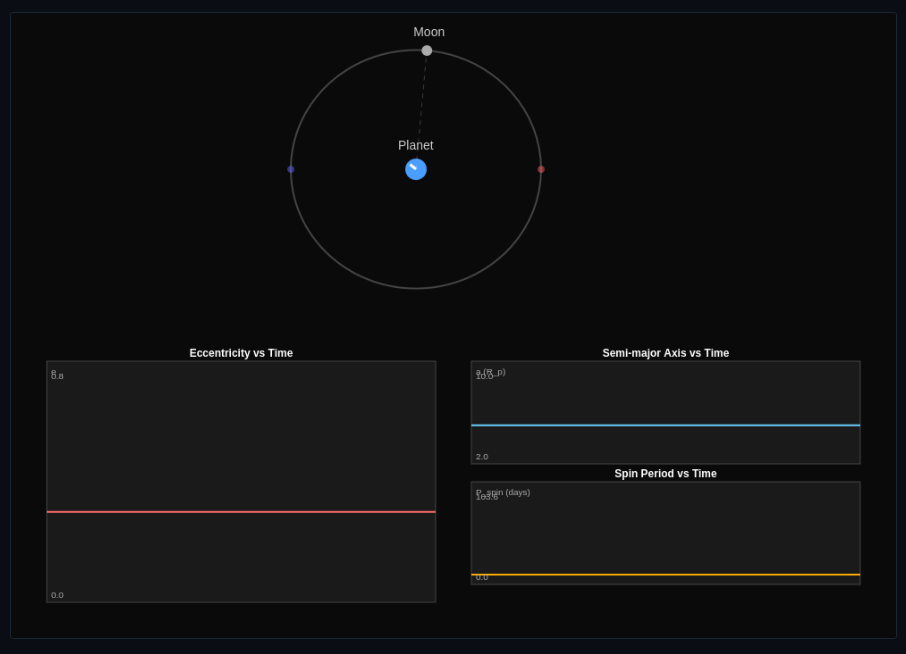
Tidal Locking & Orbital Evolution
Watch tidal forces circularize orbits and lock rotation to revolution—explore Earth-Moon evolution over billions of years
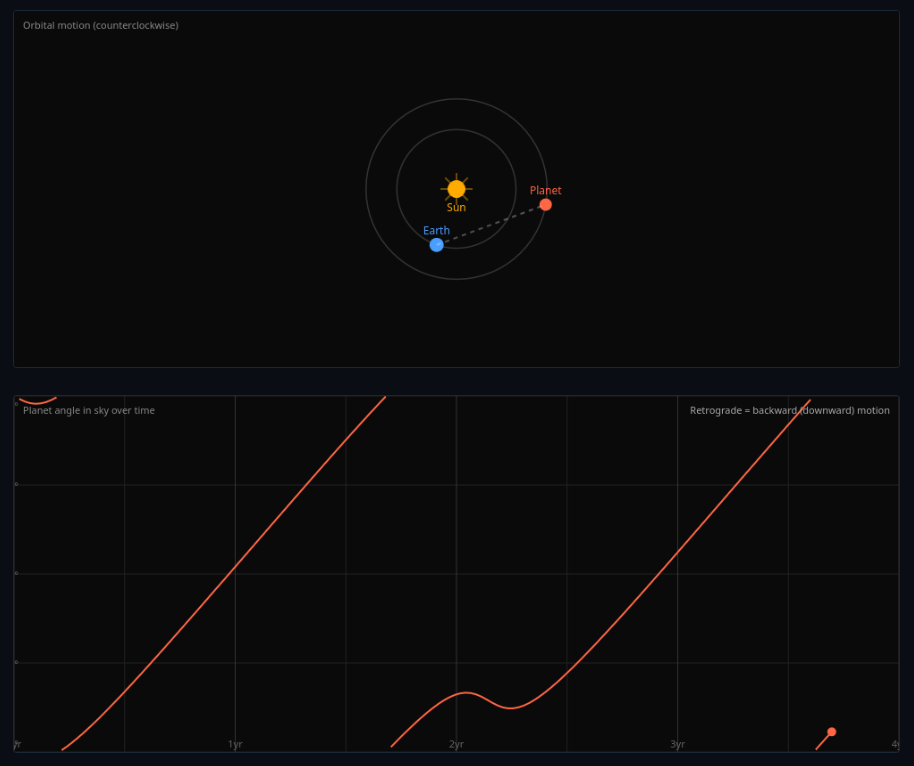
Planetary Retrograde Motion
Watch planets appear to reverse direction as Earth overtakes them in orbit—see why ancient astronomers needed epicycles
Stellar Properties & Evolution
Plot stars on the Hertzsprung-Russell diagram and watch them evolve through their life cycles. Explore blackbody spectra, asteroseismic oscillations, and supernova light curves.
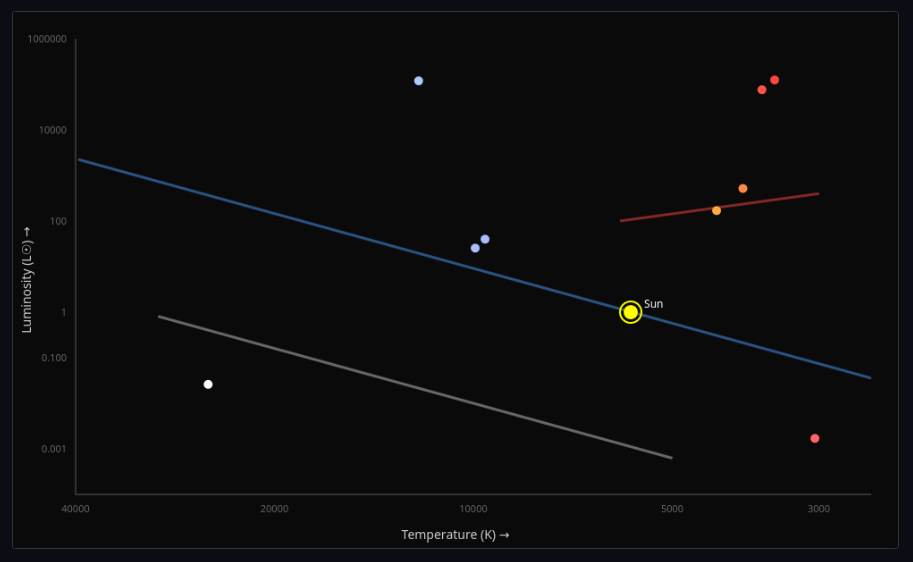
Hertzsprung-Russell Diagram
Plot stars on the HR diagram—explore the main sequence, giants, and white dwarfs

Stellar Blackbody Spectra
Adjust stellar temperature and radius to see blackbody spectra—compute photometric colors through filter bands

Stellar Evolution on the HR Diagram
Watch stars evolve across the HR diagram—trace mass-dependent paths from main sequence to giant branch
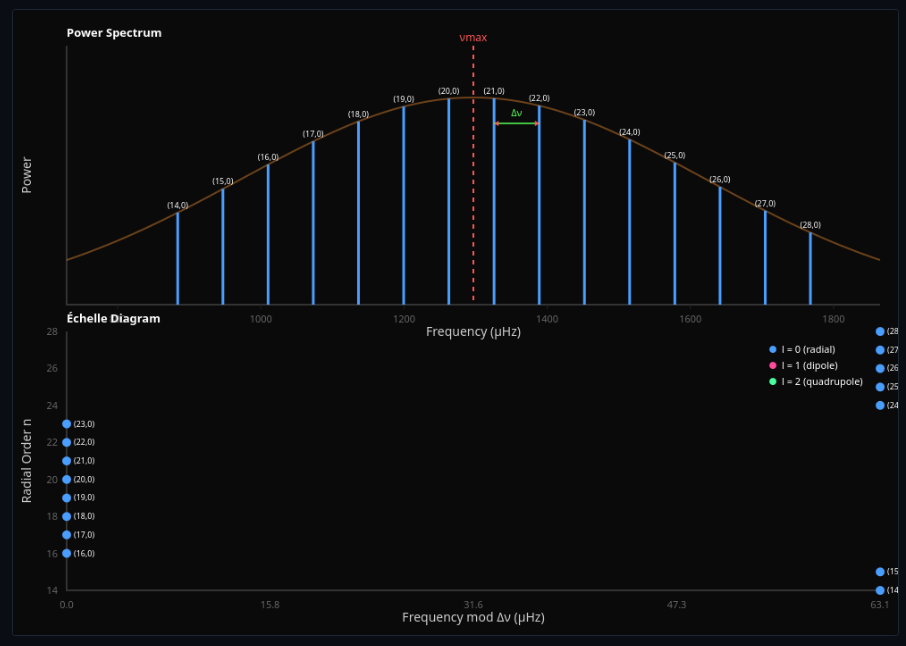
Asteroseismic Oscillation Scaling
Measure stellar oscillation frequencies and apply scaling relations—infer mass, radius, and age from asteroseismic data
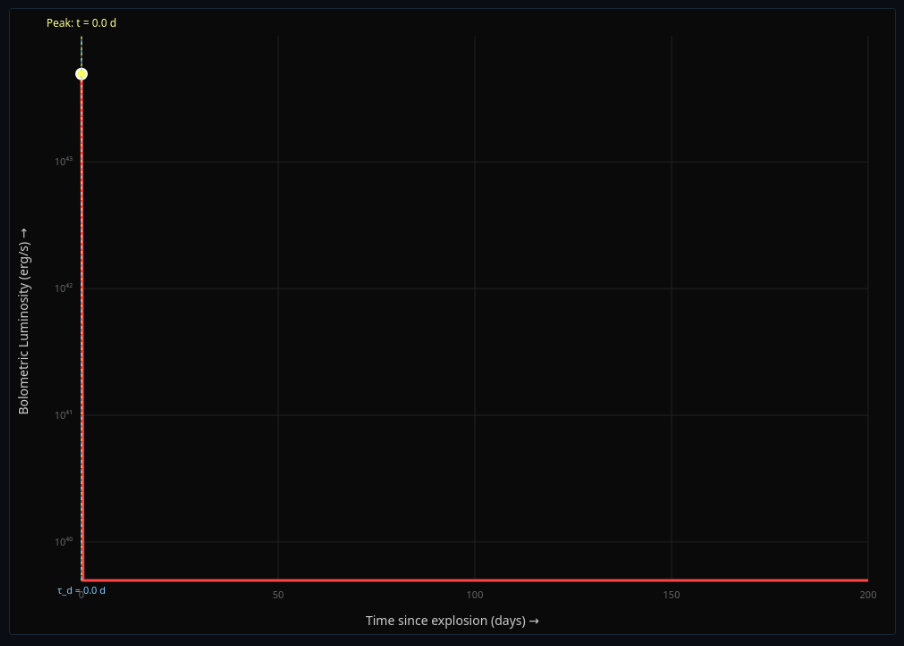
Type Ia Supernova Light Curves
Model Type Ia supernova light curves with the Arnett model—adjust nickel mass and diffusion timescale
Exoplanet Detection Methods
Discover planets around other stars using transit photometry, radial velocity, and transit timing variations. Probe exoplanet atmospheres through transmission spectroscopy.

Exoplanet Transit Photometry
Watch a planet transit its star and measure the light curve—infer planet radius from transit depth

Radial Velocity Exoplanet Detection
Measure stellar wobble from planet gravity—compute RV semi-amplitude and period from Doppler shifts
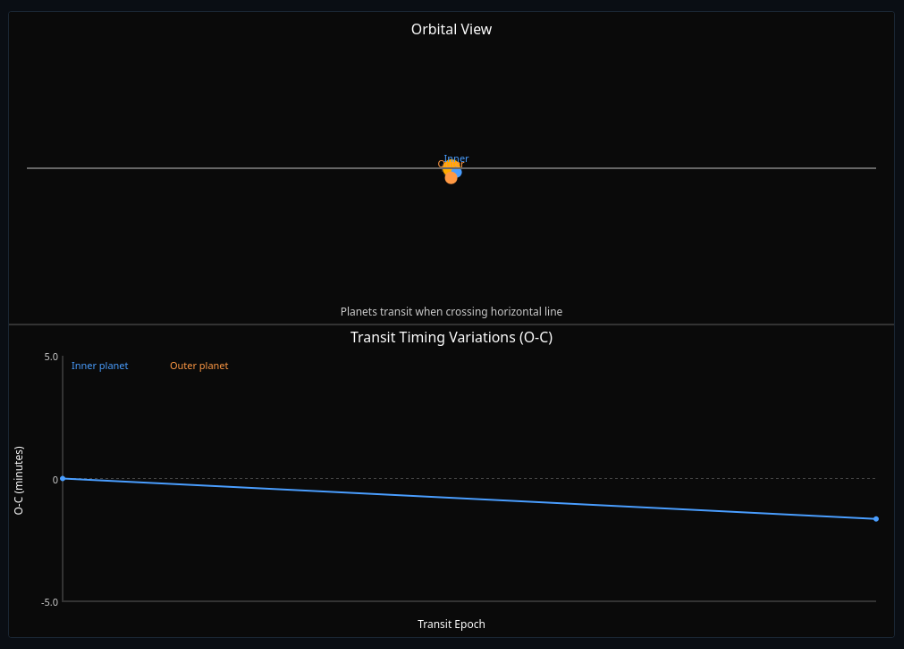
Transit Timing Variation Method
Watch transit times shift as planets gravitationally perturb each other—detect non-transiting planets from TTV signals
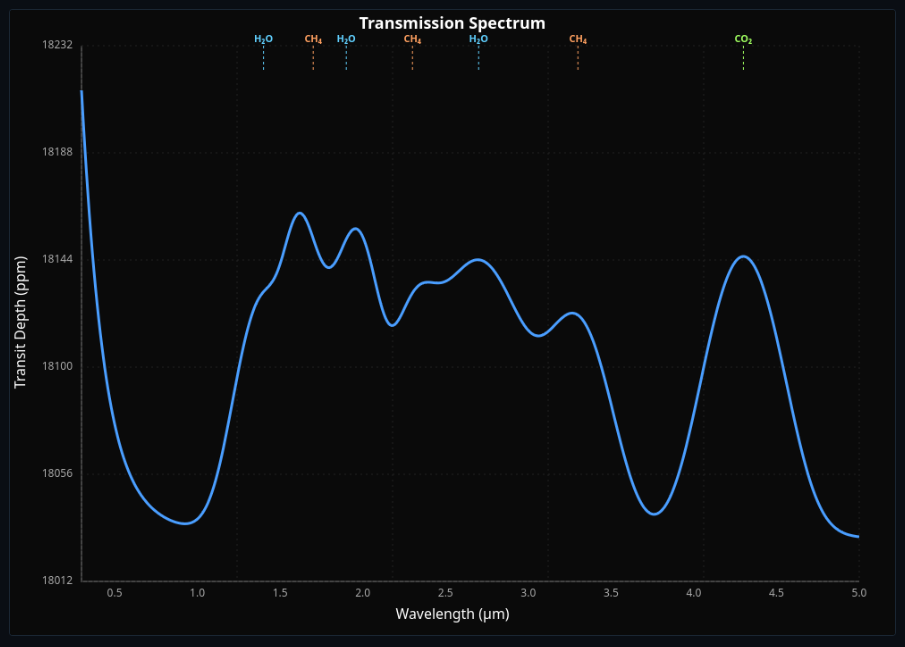
Exoplanet Atmospheric Transmission
Measure transit depth vs wavelength to probe exoplanet atmospheres—see how atmospheric scale height affects absorption
Observational Techniques
Master the tools of observational astronomy. Model point spread functions, perform differential photometry, measure parallax, and time pulsar signals.
Galactic Structure & Dark Matter
Explore galaxy morphology through Sérsic profiles and measure rotation curves that reveal dark matter. See how dark halos contribute to galactic dynamics.

